Smart Home Blog
December
31st

December proved to be pretty special for my smart home solar installation project! We generated 265kWh, an average of 8.6kWh per day, with a low of 0.2kWh and a high of 21.3kWh. This is more than November, which was unexpected. My full analysis for December.
29th

The lower half of the mount to fix three blades to my hoverboard motor based Vertical Axis Wind Turbine (VAWT). Another one will clamp the arms from above and I'll also use a 200mm diameter × 5mm thick aluminium disc to add more strength.
27th
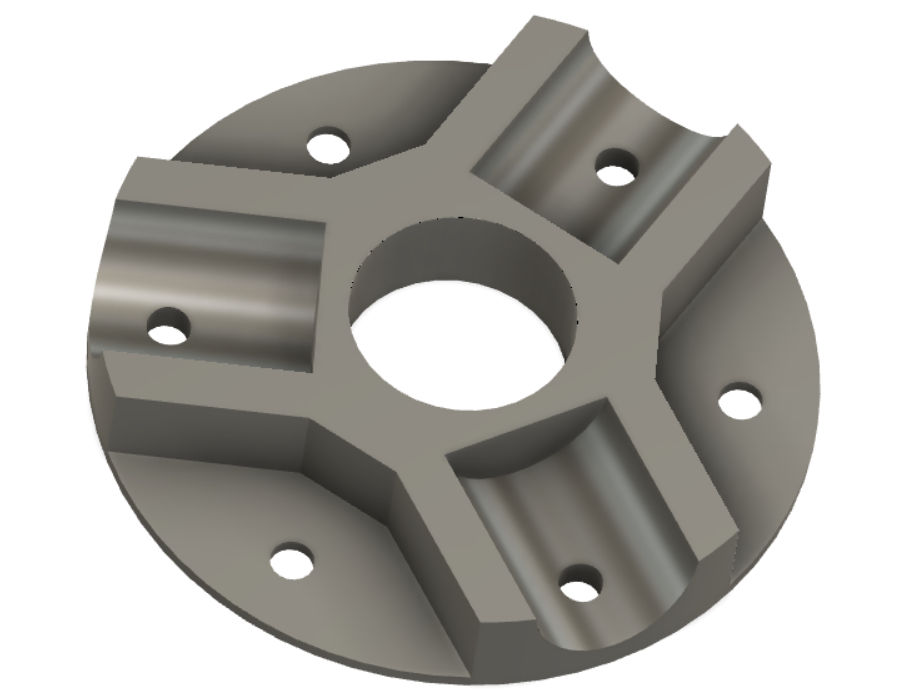
Designed a 2-part mount to fix three blades to my hoverboard motor based Vertical Axis Wind Turbine (VAWT). This is half of the mount and will be 3D printed.
26th
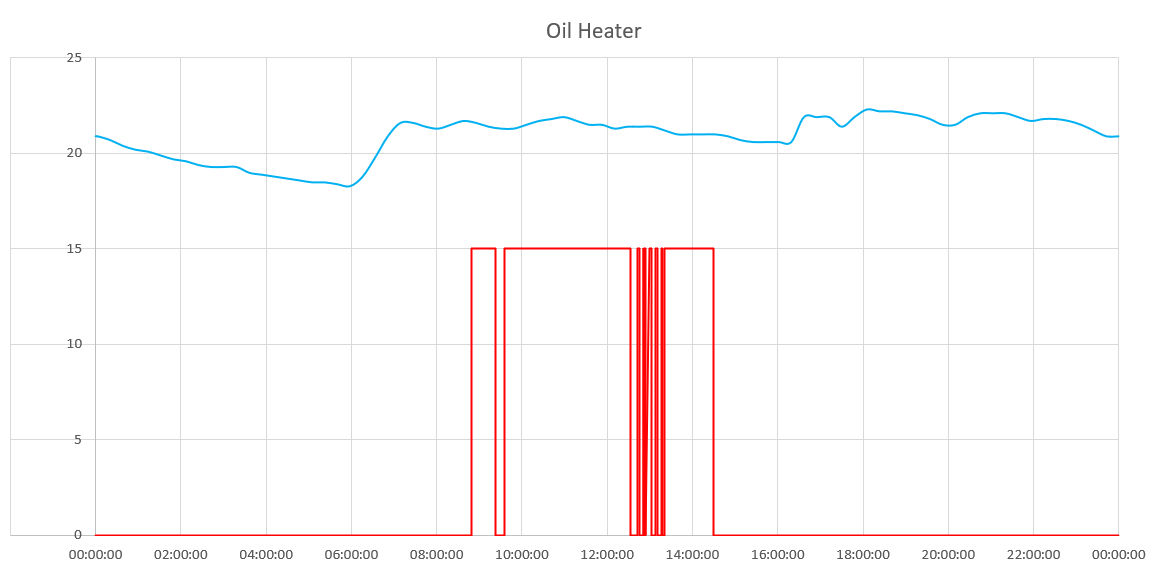
This day was the first decent sunshine I got to test how well my smart oil heater project works. The outside temperature was just 7°C and it was a clear sunny day. My solar panels generated 20.3kWh between about 08:30 and 16:00. The oil heater was configured to be on regardless of the house status and we were actually out from 13:15 to 14:46 for a walk. We also ran the washing machine and tumble dryer during the morning and into the early afternoon.
Despite this, the oil heater was activated 9 times, for a total of 4 hours and 48 minutes. The longest period it was on for was 2 hours 56 minutes and 39 seconds. Despite our lounge, dining room and kitchen being one open-plan space, the temperature dropped much more slowly than it normally would and stayed above 20.5°C. This represents about 4.5kWh of energy being used to heat our home.
22nd

One of my simplehuman soap dispensers has failed :-( Just looked at how old it is though and it's lasted nearly 10 years!
20th
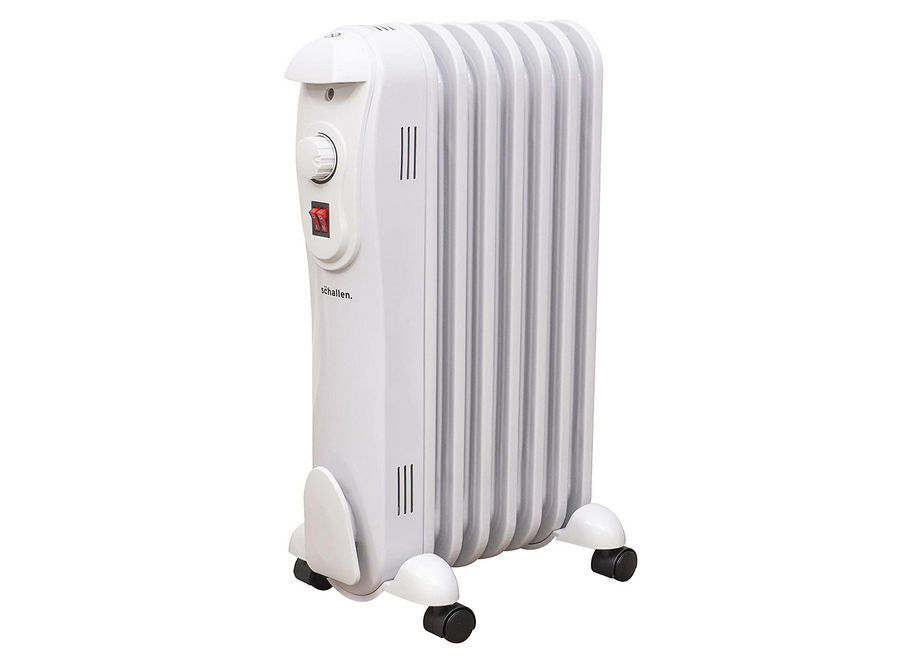
I've bought an oil heater for my smart oil heater project, using free power to heat my home.
18th
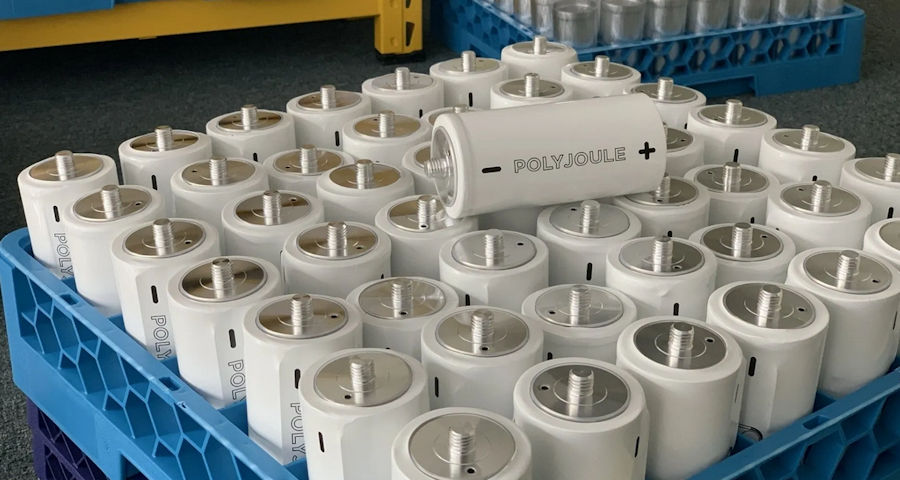
Discovered another interesting battery technology this month, by PolyJoule. Their ultra-safe, conductive polymer battery technology looks perfect for residential storage solutions. It would allow a 100+kWh battery store at a reasonable price but, it would be fairly big as the energy density is lower than the current best technologies. Having contacted them though, this is not their current focus 🙁
15th

We have been away for a week and the weather was particularly cold. My contextual smart home maintains a minimum house temperature of 15°C whilst the house status is 'Away'. I was curious to see how much less gas we used heating our home under these conditions.
The answer is a saving of about 20%, compared to how we would normally heat our home in this kind of very cold weather. Not heating it at all would result in much greater savings but, this risks freezing pipes and killing some of my exotic plants.
9th
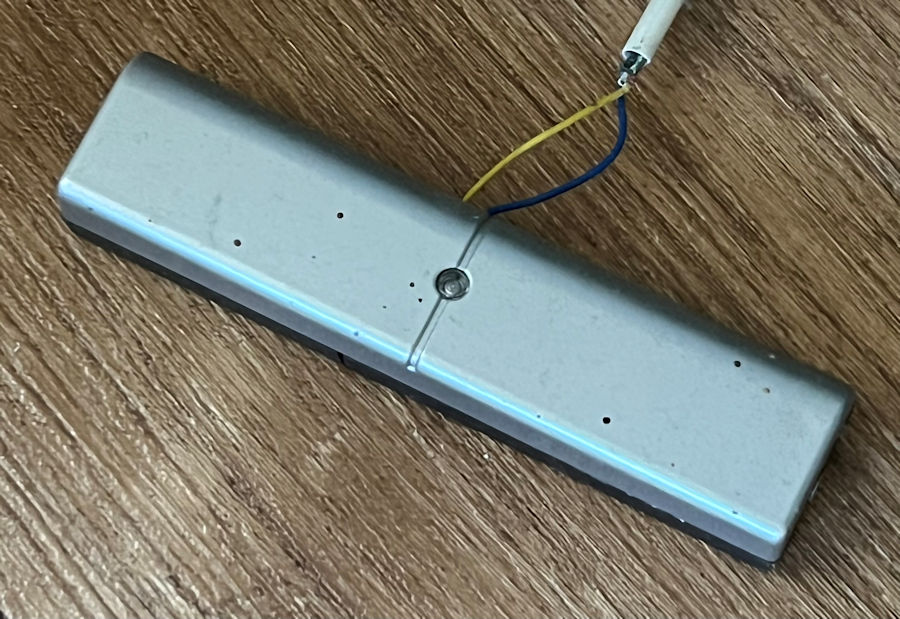
I received a notification from my contextual smart home this morning. It monitors all the batteries installed in the smart home devices installed in my home and it let me know that the battery in this Everspring SM103 device had reached 30%. The batteries were last changed in January 2020. This is another one of the first Z-Wave devices I installed back in 2011 and this one uses a remote reed switch as the contact sensor for my back door. The concrete lintel and frame meant it was impossible to use a wired sensor at the time, though I could do so now.
8th

Another good solar day. Generated 20.9kWh and put 12.9kWh into the EV. Normally it would be higher but we used the washing machine and tumble dryer several times today.
7th
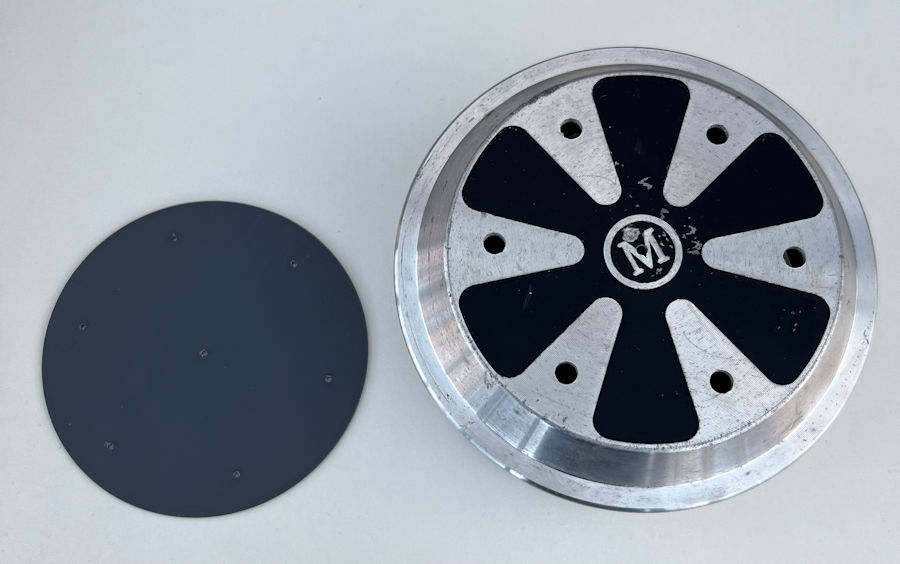
I did some more work on the hoverboard motors acquired for my Vertical Axis Wind Turbine (VAWT) project, to allow me to test them more thoroughly.
6th
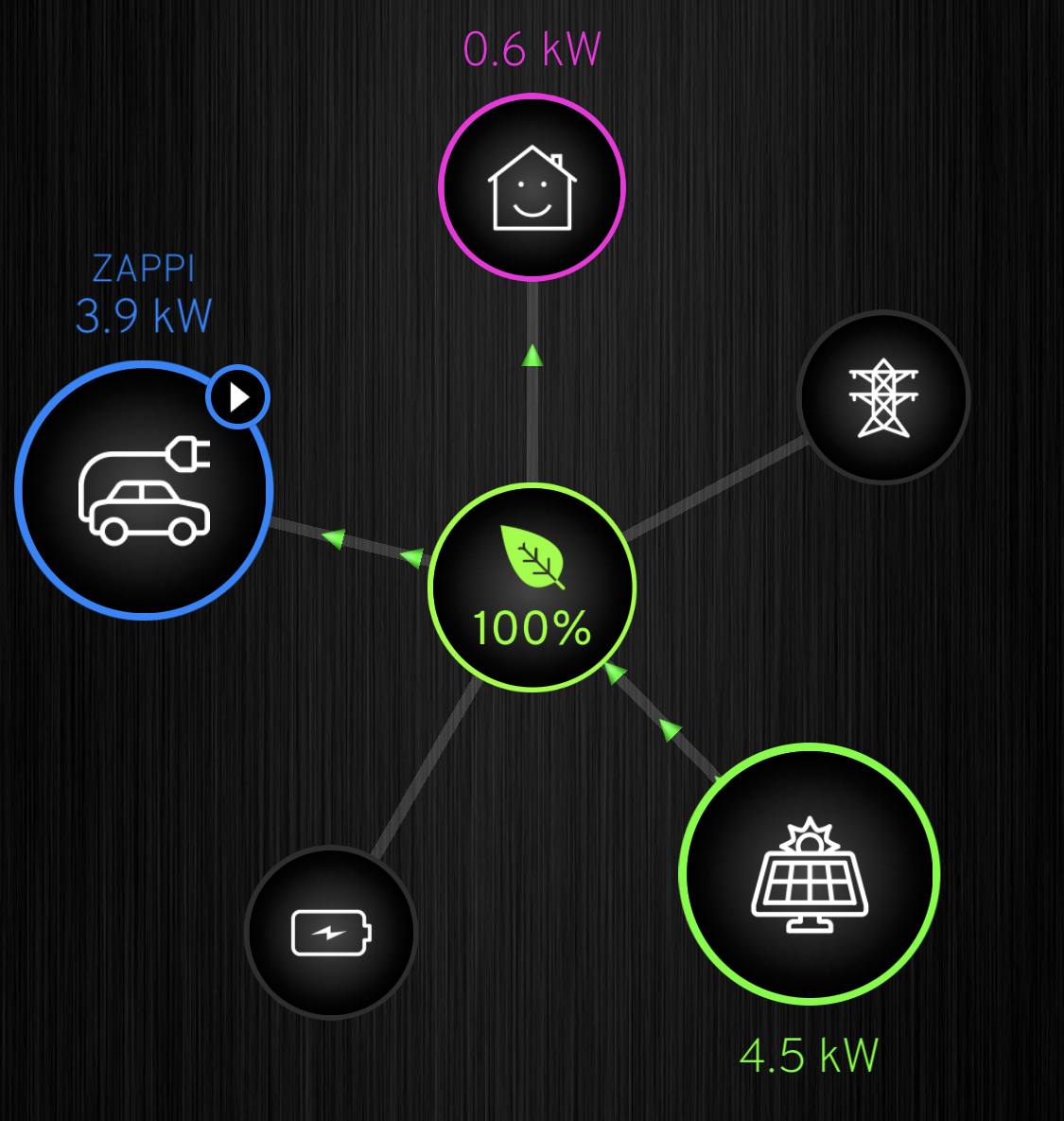
Icy this morning but clear, blue skies and I saw a peak of 4.5kW being generated today. Managed to get over 10kWh into the CUPRA Born. Each kWh is 1.7% more on the battery or 3.5 miles added to the range. This week, we will be running the CUPRA Born on 100% solar energy, as my Solcast forecasts look good. I never thought this possible, this close to the shortest day of the year!
4th

The Solcast forecasts displayed on my dashboard have been the lowest I've ever seen this week 🙁 This is what winter can look like with solar power.
2nd
Someone quoted an interesting solar statistic today, that I had not seen before. It struck me as a really good measure of overall installation effectiveness and system efficiency. It is something I'm sure my Enphase microinverters really improve.
I've called it the "Monthly Generation Factor" (MGF) and it is the 'monthly energy generated in kWh' divided by the 'specified peak output of your panels in kW', for any given month. So for November my MGF is 255kWh ÷ 6.63kW = 38.5.
1st
November was our first whole month with our solar panels and Zappi smart EV charger, part of my smart home solar installation project. The numbers have exceeded my expectations by some margin 🙂 We have generated 255kWh this month, an average of 8.5kWh per day, with a low of 0.9kWh and a high of 26.4kWh. We have saved £313 this month, which equates to a payback period of less than 3 years. We have travelled 3700 miles in our #EV so far, at a cost of just £65. Full analysis and details here.
November
29th

I received a notification from my contextual smart home this morning. It monitors all the batteries installed in the smart home devices installed in my home and let me know that the battery in this Everspring ST814 device had reached 30%. This a combined and humidity sensor installed in our main bathroom and connected using Z-Wave technology. This was one of the first Z-Wave sensors I installed in my home back in 2012 and it has performed flawlessly for the last ten years. This might possibly be the oldest commercial bit of smart home equipment still in use in my home. I've got other smart home equipment that is 20+ years old but, I built all that myself 😊 The batteries were previously changed over 20 months ago.
26th
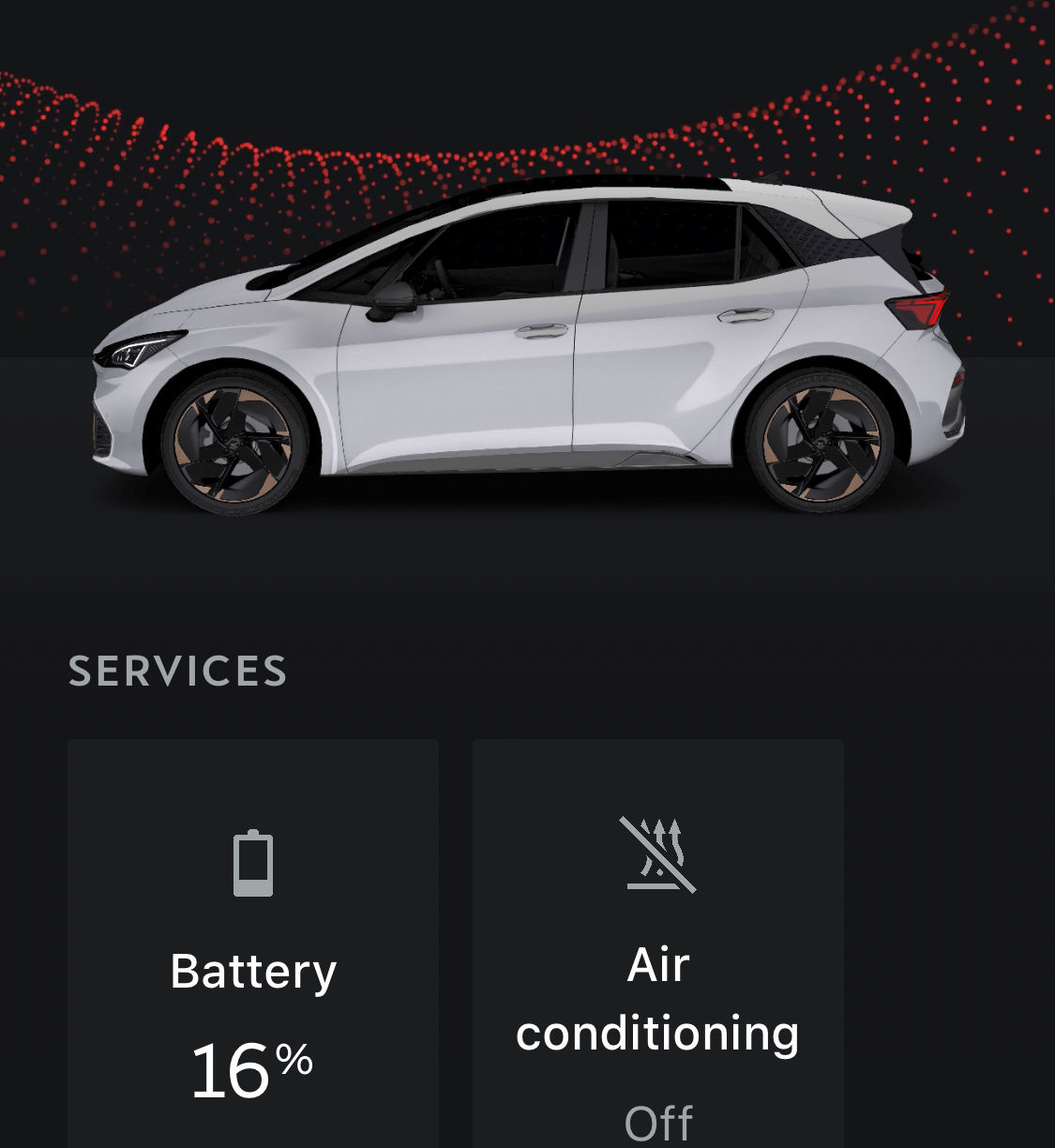
My wife and daughter planned a shopping trip to London, so I charged the CUPRA Born to 100% the night before their trip. It is 85 miles each way to Westfield, Stratford and they returned home with 16% battery left. The cost of the electricity to make this trip is just £3.65 😂

I then tried to charged the CUPRA Born to 80% overnight but it only got to 73% and I wondered why. I'd forgotten that the Octopus Go charging rate is only 4 hours long and the Zappi smart EV charger can only deliver a peak charging rate of 7.4kW.
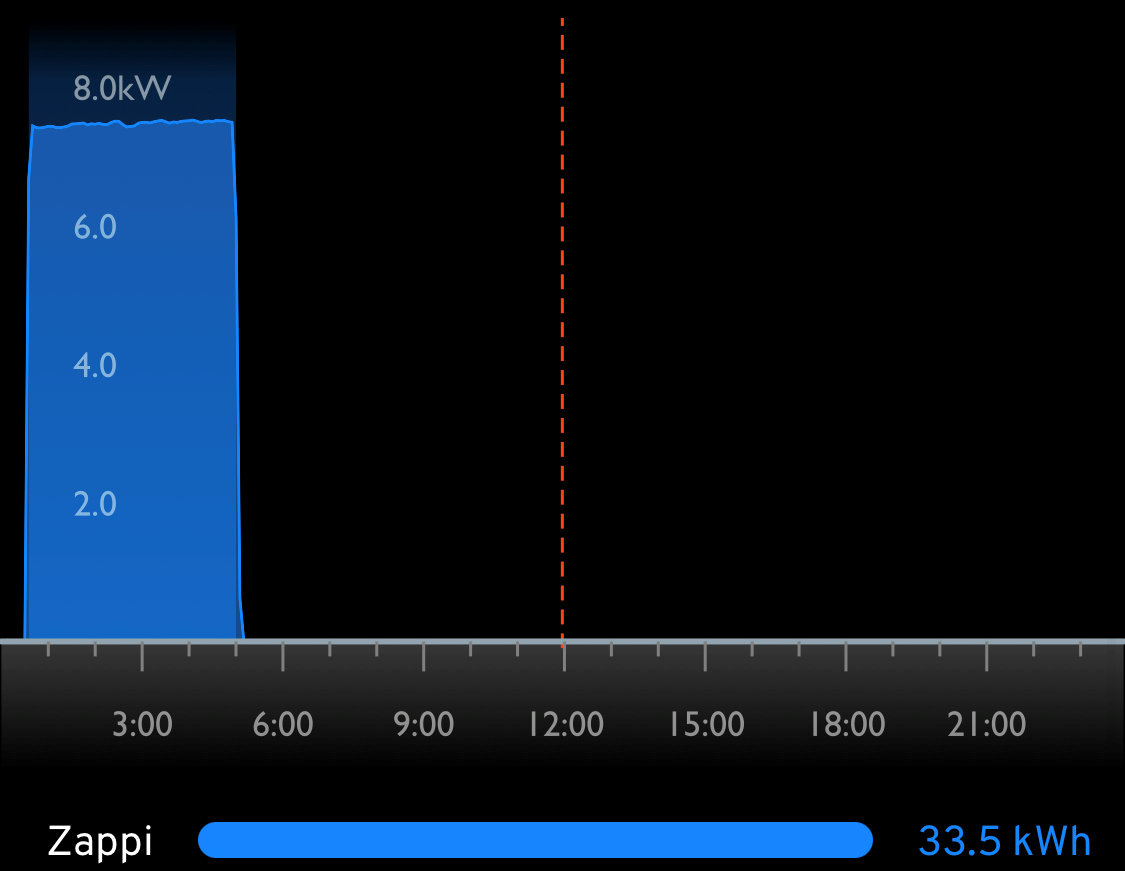
This then also got me wondering why it was 33.5kWh and not 29.6kWh (4 × 7.4kWh) and then I realised that I'd scheduled a 4.5 hour charging window by accident 🙁
25th
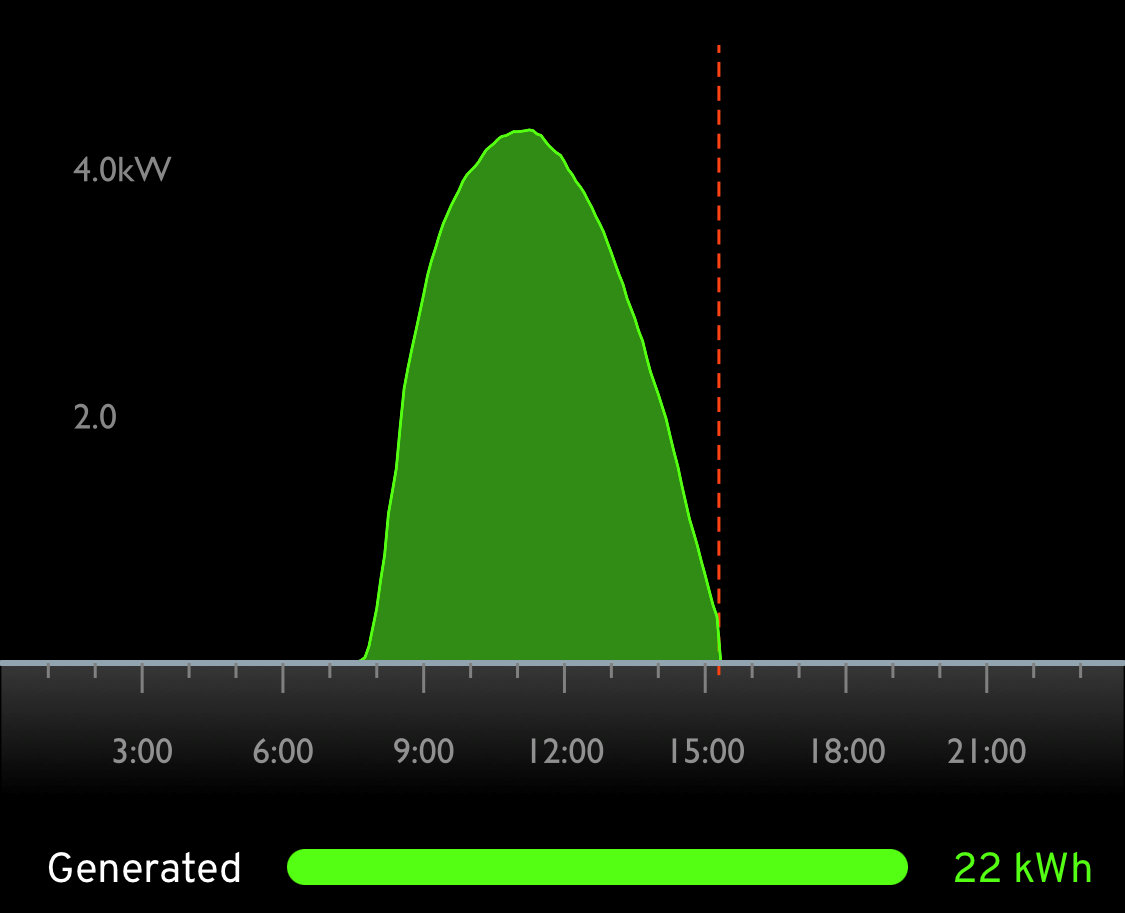
Todays was an exceptional day for solar generating considering it is nearly December. 22.1kWh generated and a peak of 4.2kW 😎 This does a lot to help my average daily generation, which is impressive at around 9kWh this month.

Better still, my Zappi smart EV charger managed to put 17.4kWh into our CUPRA Born. This is doing a lot to improve my Return On Investment (ROI).
19th

Given that our Tesla Powerwall can deliver 5kW continuous (with short periods up to 7.5kW), I was curious to know how often we exceed 5kW usage. I've never seen it happen. As 'House Power' is monitored by my contextual smart home, it is really easy to set an upper limit in the JSON configuration, to automatically generate a notification. It turns out, we do cross 5kW (just) occasionally.
17th

My smart immersion heater controller is now complete and ready for testing. This enables intelligent and proportional control of solar energy into the immersion heater in my hot water tank.
15th
Another humidity sensor sensor failed this week. This one was in the conservatory and it was over 7 years old. The Honeywell HIH-4000 sensors are the best but, their lifetime is shortened by exposure to higher humidity.
13th

I've been painting the pieces of steel on which my Tesla Powerwall will be mounted. These are 2.2m tall × 40mm wide × 6mm thick and will be bolted to the garage wall. The Powerwall bracket will also be bolted through these bars, which transfer most of the weight down to the concrete floor.
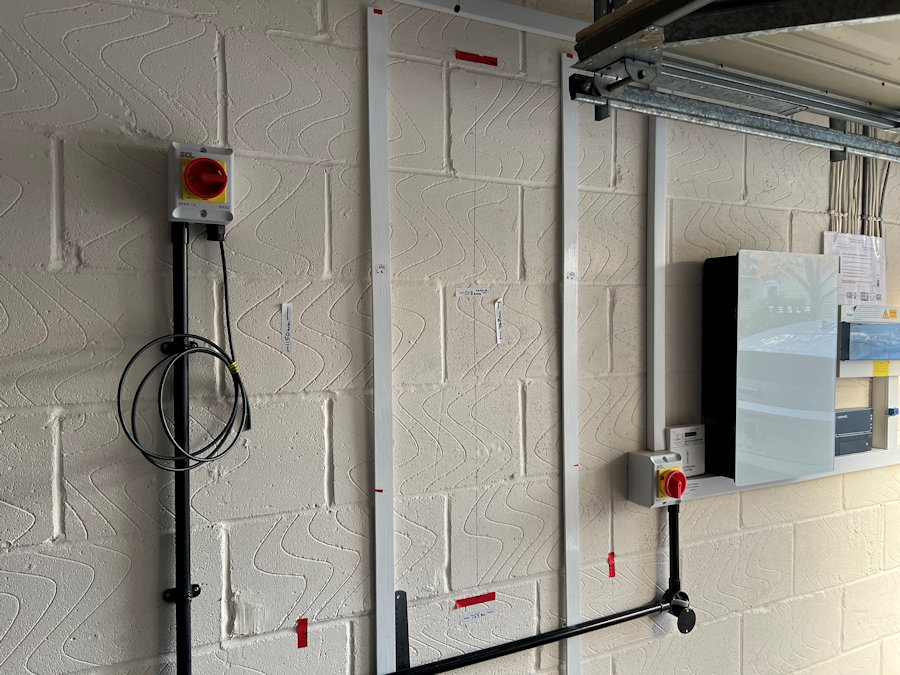
I've got to carefully measure where they go, so that the mounting bolts line up with the holes in the Powerwall mounting bracket.
11th

I use Solcast predictions as part of my smart energy management and using data from October, I recalibrated my site at the start of November. The data is looking nice and accurate now 😎
10th
A big part of reducing our electricity costs at this time of year is making sure we are on the right tariff. Each month, I do some analysis to make sure we are on the best one. Based on our predicted usage for November (including typical EV charging), we would be paying about £172 for electricity on the standard Octopus variable tariff. By being on the Octopus Go tariff, this reduces to £124. If our Tesla Powerwall was also installed, my prediction is that we would pay just £16 for electricity this month 😮 We will make very little exporting energy in November, less than £12.9th
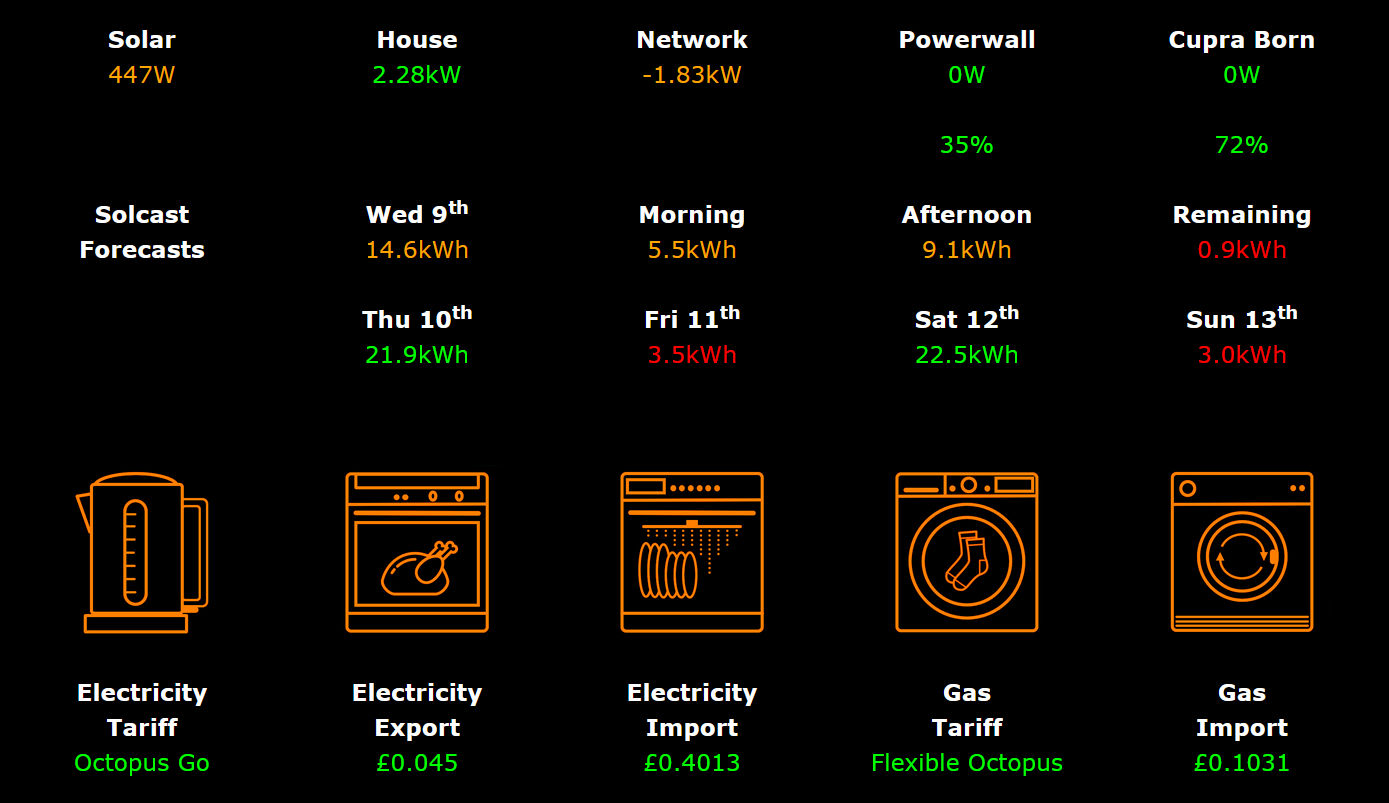
Spent the day wiring up the rest of my current transformers and interface boards, so that my contextual smart home now has real-time data to do its smart energy management. This also means my energy dashboard is now displaying live data.
7th
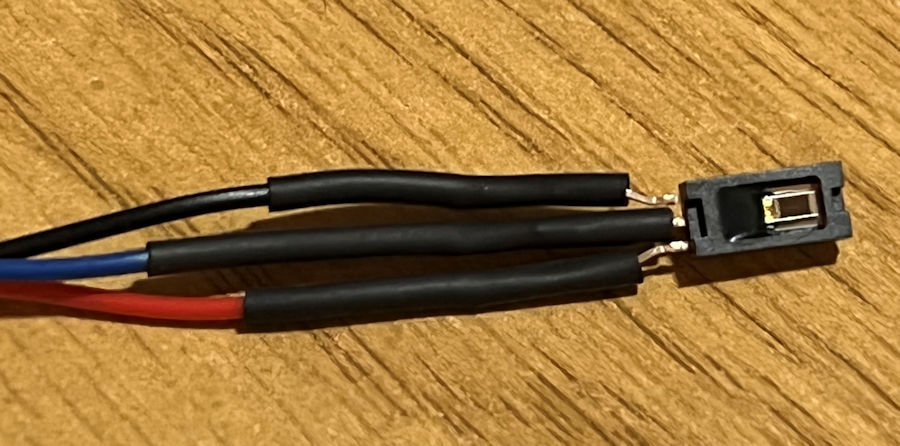
Whilst I was away this weekend, my contextual smart home had been messaging me to let me know the humidity sensor for our smart shower had failed after more than 4 years of use. I use Honeywell HIH-4000 series humidity sensors as they are very accurate and deliver great performance but, they don't last forever. I've learnt over many years, to install them such that they can be replaced fairly easily.
3rd
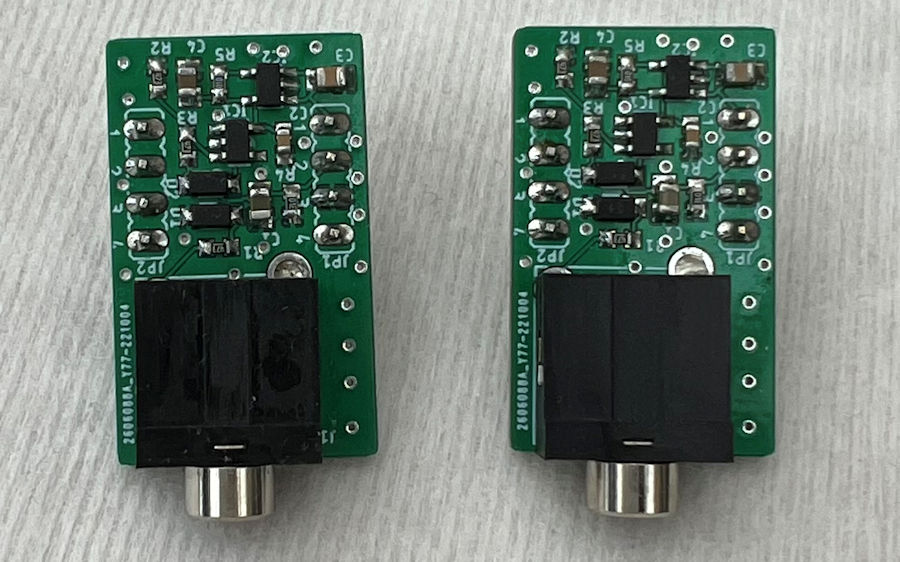
I have two more current transformer interface boards to install. These will allow my contextual smart home to monitor my energy usage via a networked Arduino processor.
2nd

Lots more progress on my smart home solar installation project today. I got the Enphase invite to set up the app. You can read more about my Enphase microinverters.
This meant that I was then invoiced for the rest of my system, Tesla Powerwall aside. I paid the invoice by credit card and got my post-install pack just a few hours later. This meant I now had all the documentation required to apply for SEG payments 😎
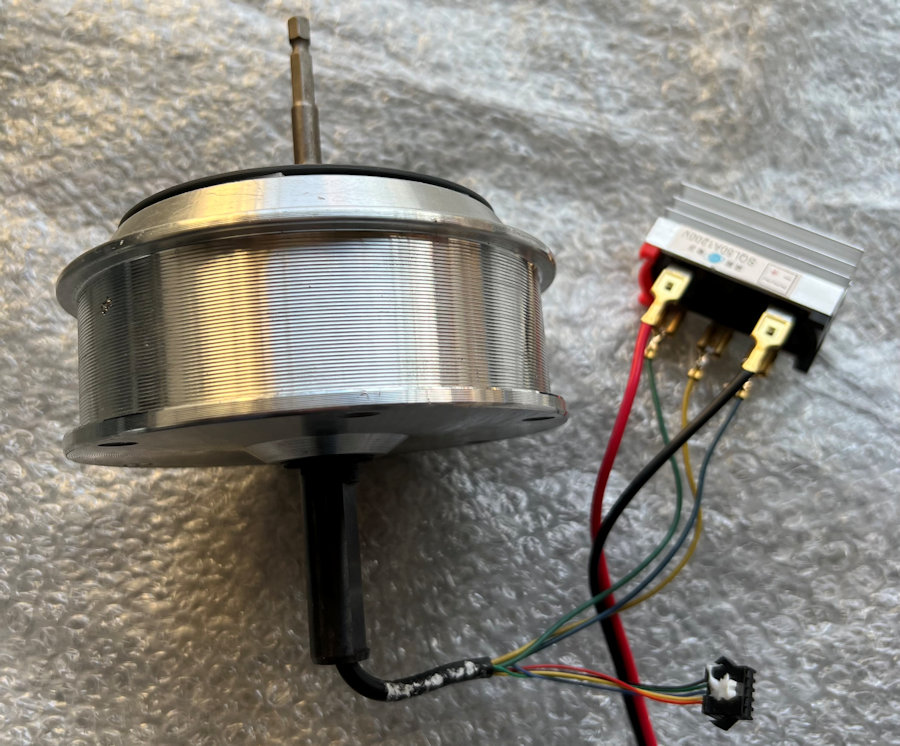
I did some basic, functional testing with the hoverboard motors acquired for my Vertical Axis Wind Turbine (VAWT) project, using my electric drill to rotate them. With no load, these motors output more than 150V dc. With a high-power, resistive load I could easily generate more than 50W. The torque involved destroyed my 3D printed boss before I could reach 100W though. I will construct a more solid mechanism to rotate these and test them again. Over 200W is looking achievable though.
1st
I've been doing some solar energy analysis for October. Our solar panels and Zappi smart EV charger were installed on 18th October, our Tesla Powerwall (battery storage) comes later. From the 18th to the 31st we generated 223kWh, an average of 15.9kWh per day, with a low of 2.4kWh and a high of 32.5kWh. Extrapolating this out to the whole month means we would have generated about 494kWh.
Our historical baseline electricity usage for October is 443kWh and we imported 411kWh this month (a 7% reduction), despite importing 99kWh to charge the EV. Excluding EV charging, we imported 334kWh for household use and most of this was cheap time/rate electricity (a reduction of 25%). Our average daily household consumption was 10.8kWh, with a low of 4.8kWh (we were away) and a high of 15.2kWh. From the 18th to the 31st, we exported 130kWh (for which we are not getting paid yet), with a daily high of 27.7kWh, a low of 0.8kWh and an average of 9.3kWh. So, everyday day we have exported on average about what our home uses. Extrapolating this out to the whole month means we would have exported 289kWh.
With our Tesla Powerwall installed, things would look very different! We would not have imported any electricity at all, been able to run our CUPRA Born using solar power alone and also managed to export some energy at peak times/rates.
Our historical baseline gas usage for October is 1220kWh. We used 807kWh this month (a 34% reduction), averaging 26.0kWh per day, a low of 10.2kWh and a high of 39.1kWh. Some of this is down to the weather, some of it is due to shifting gas usage to electricity. I'm installing a solar hot water heater and more electric space heating this coming month. I'll also be tracking how much solar v imported energy goes into our EV too.
October
31st
A very timely sunny day. With the CUPRA Born plugged into the Zappi smart EV charger, I added 12.6kW (19% = 48 miles) to its battery. At this time of the year, you have to make the most of any sunshine. We also ran the washing machine 3 times today too.
30th

A 191 mile drive back from Malmesbury to Kesgrave was always going to be close, given the 223 mile starting range at 100% charge. I got notified of an M4 closure almost straight away though, so I invoked my plan B and headed straight towards Gridserve Braintree, which is only a slight diversion and 45 miles from home. This place is just amazing! It has loads of chargers, some delivering up to 350kW.
We arrived with just 24% battery (51 miles range) and used one of the 120kW chargers, costing 64p per kWh. In the time it took to have a coffee at the Costa inside, we got to 65% and 141 miles range. It cost just £13.95 and I paid using a contactless debit card, no apps required.
28th
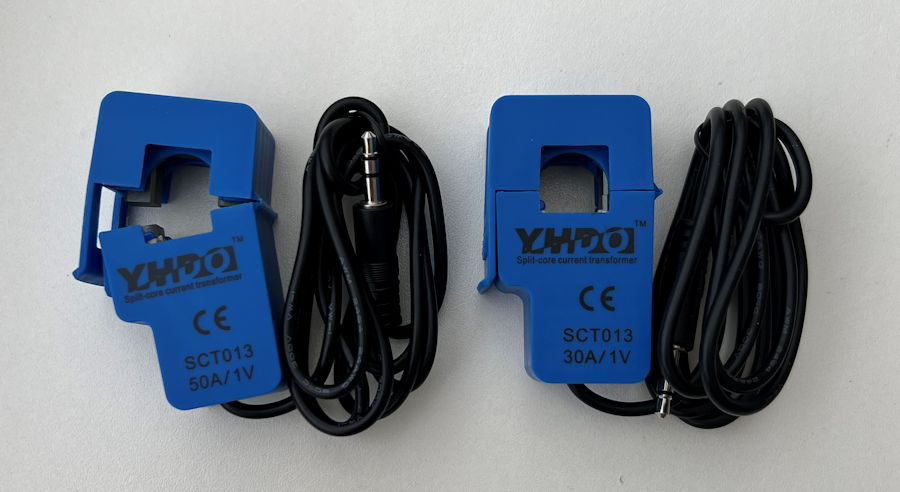
I bought a couple more split-core current transformers delivered, to be used with my current transformer interface boards. These will allow my contextual smart home to monitor my energy usage via a networked Arduino processor.
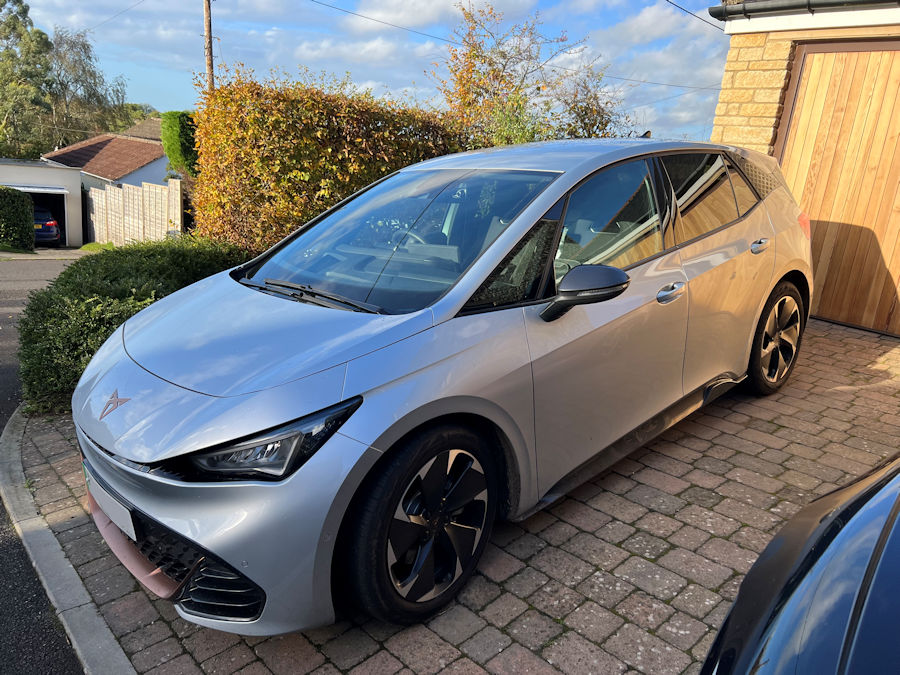
Topped up the CUPRA Born to 100% for our first properly long trip today, 191 miles from home to Malmesbury. It was possible to do it non-stop, right up until the M25 was closed near the M4 junction and we had to divert. After 3 hours driving we stopped at a Shell Recharge station for some food.
After a 29 minute stop, we had put another 18.5kWh into the battery, at a cost of £18.66. This is the first time I've paid to charge my car away from home and we have done over 2500 miles.27th
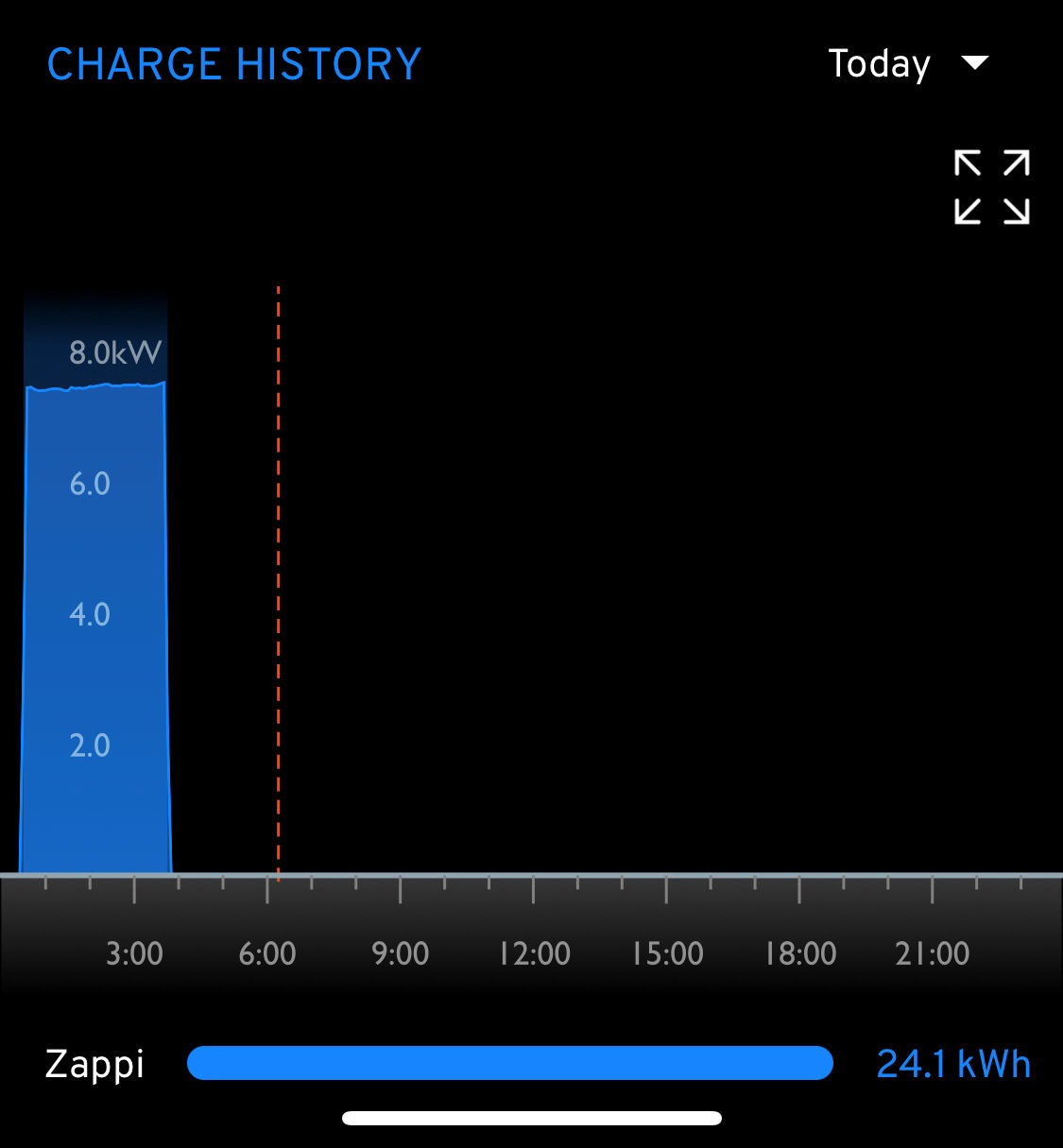
I did something I try to do very infrequently. I charged the CUPRA Born overnight to 100% so that my wife could use it today at the edge of its 240 mile range. Our Zappi smart EV charger put 24.1kWh into the EV, costing just £1.81 on our Octopus Go tariff.
26th
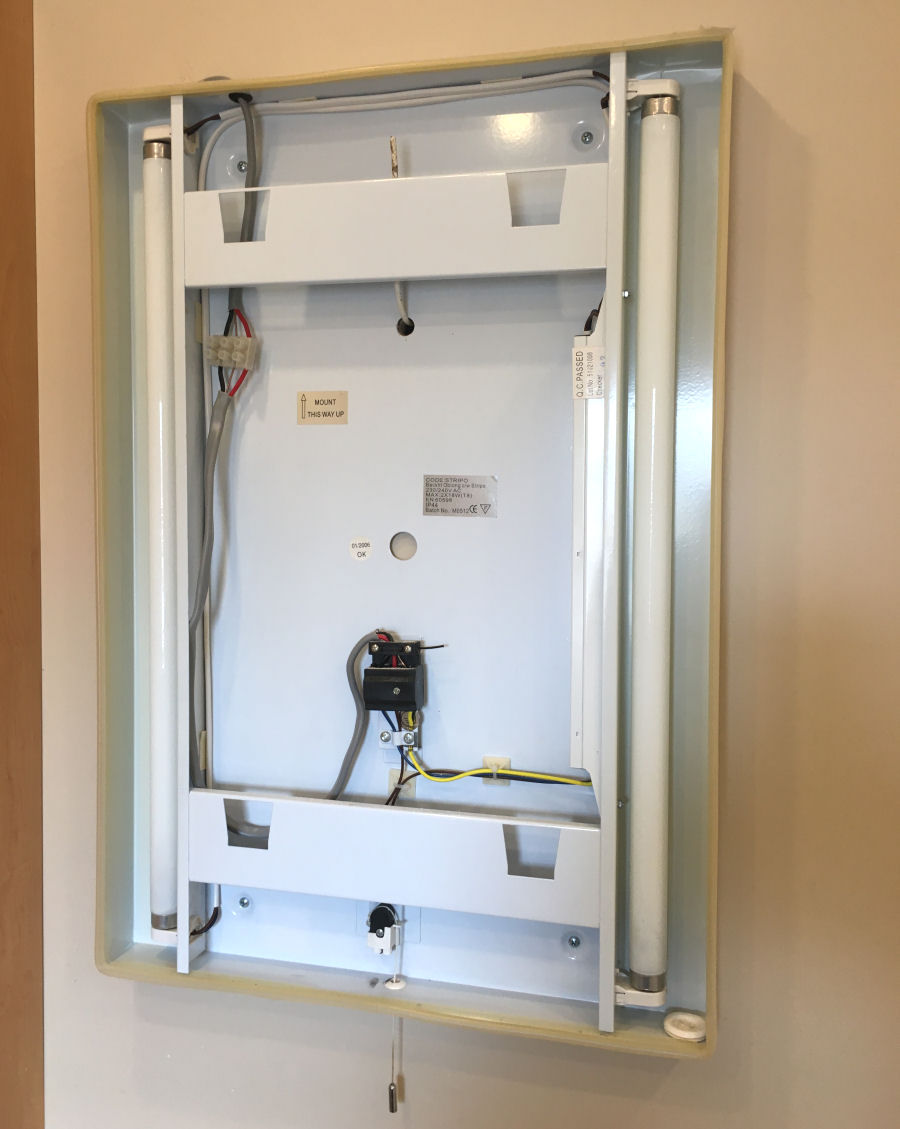
After many years of use, the tube driver in our ensuite smart mirror died. I've ripped out all the old lighting hardware and replaced the tubes with 12V LED strips. This is a photo showing the through-mirror lighting before I made it smart.
25th
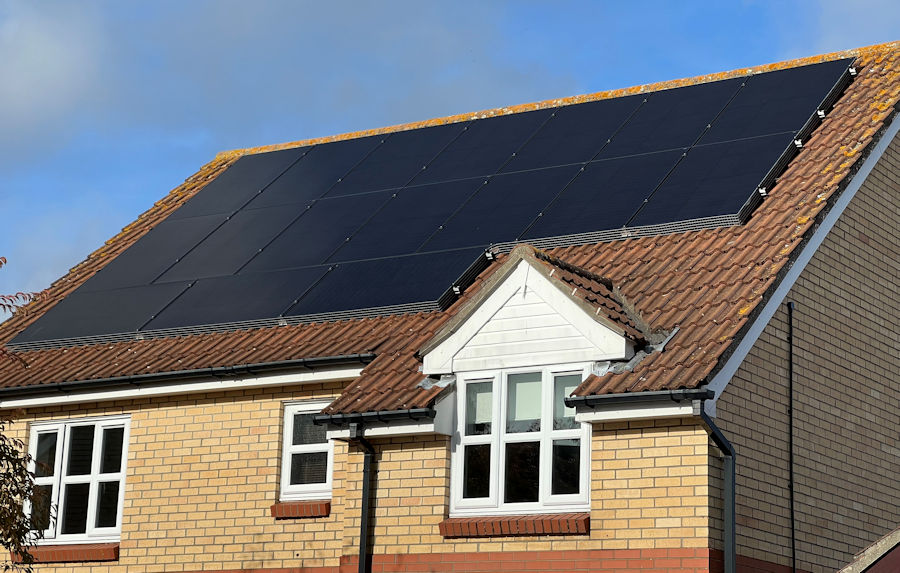
The company came today and removed the scaffolding. This is my roof with 17 × 390W Trina panels with Enphase IQ7A microinverters and bird mesh protection.
23rd

I have designed and developed this current transformer interface board with a friend, to allow my contextual smart home to monitor my energy generation and usage using current transformers. These allow the split-core current transformers to be connected to cables and a networked Arduino processor. This allows accurate and timely local data collection, without needing to use cloud-based APIs. This is enables my smart home to do intelligent energy management.
22nd
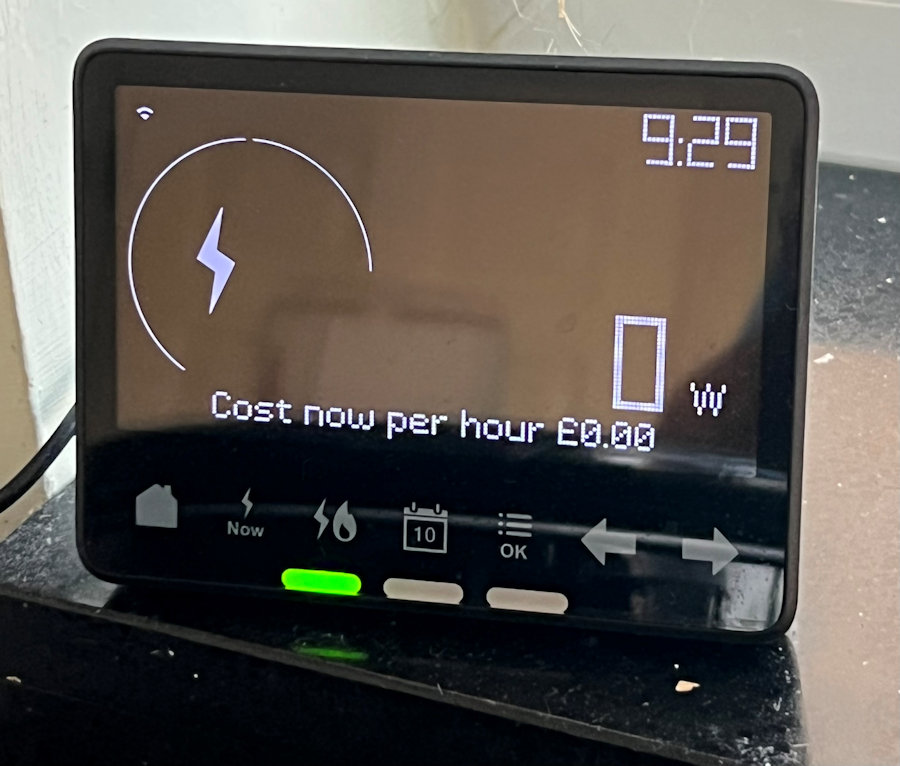
Today is a Saturday and the Solcast forecast says 30.9kWh, which means it's a good day to really see what our Zappi smart EV charger can do. The weather is mostly sunny but with quite a lot of high cloud drifting over and a general haziness to the sky. The Zappi was in Eco+ mode with an MGL of 100%. The day started with me getting my fourth COVID jab, so it was 08:44 when I got back home and plugged in the CUPRA Born, with 28% battery remaining. The Zappi immediately started putting 2.6kW into the car. Half an hour later it was above 4kW and occasionally getting above 5kW. The charger does a really good job of balancing out house load with how much it can push into the EV, so a lot of the time my IHD displays zero or close to this.
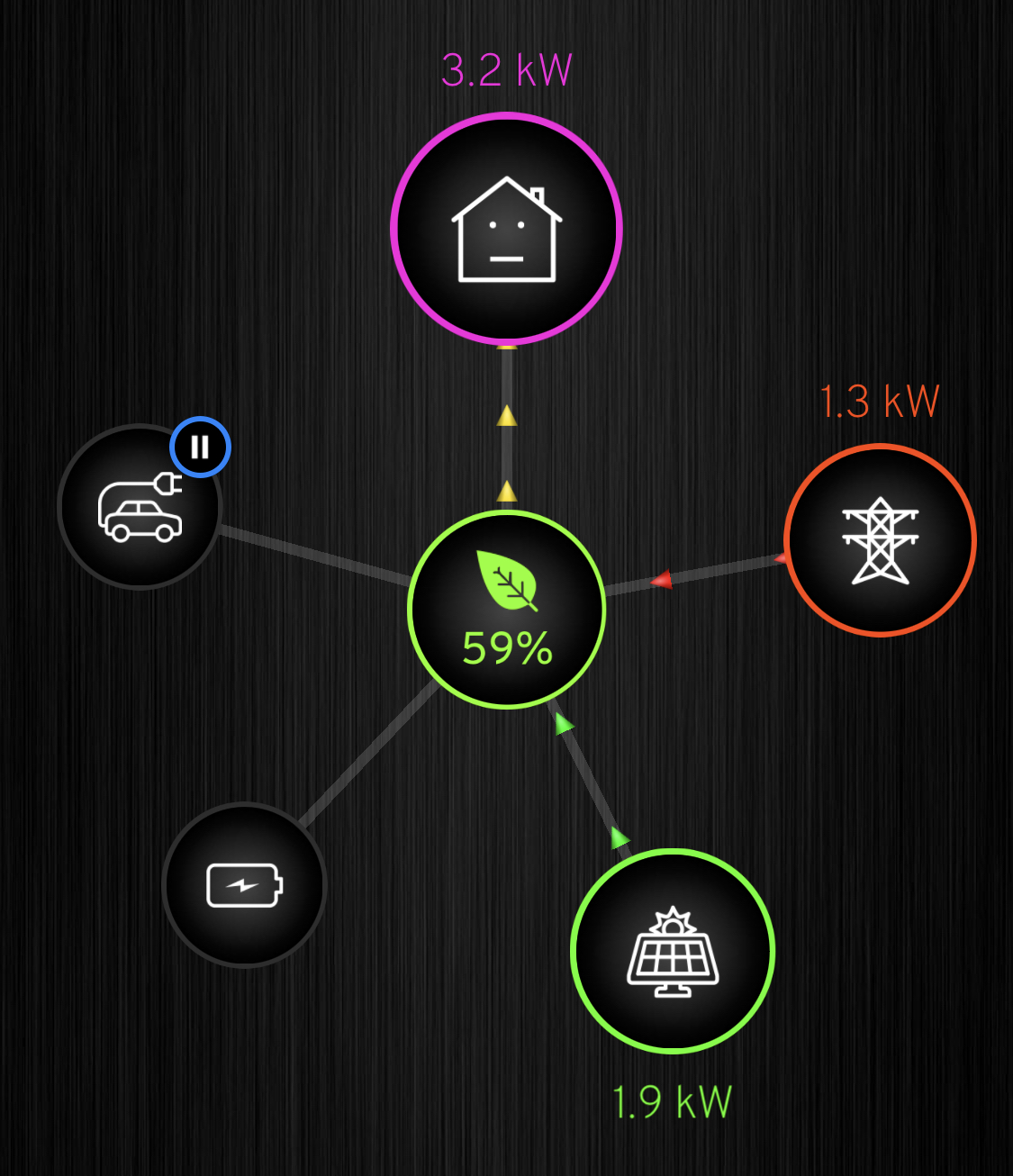
The washing machine was used once in the morning and twice in the afternoon. All the usual housework was done too and sometimes charging was paused due to the house load. This makes the final numbers all the more impressive in my view.
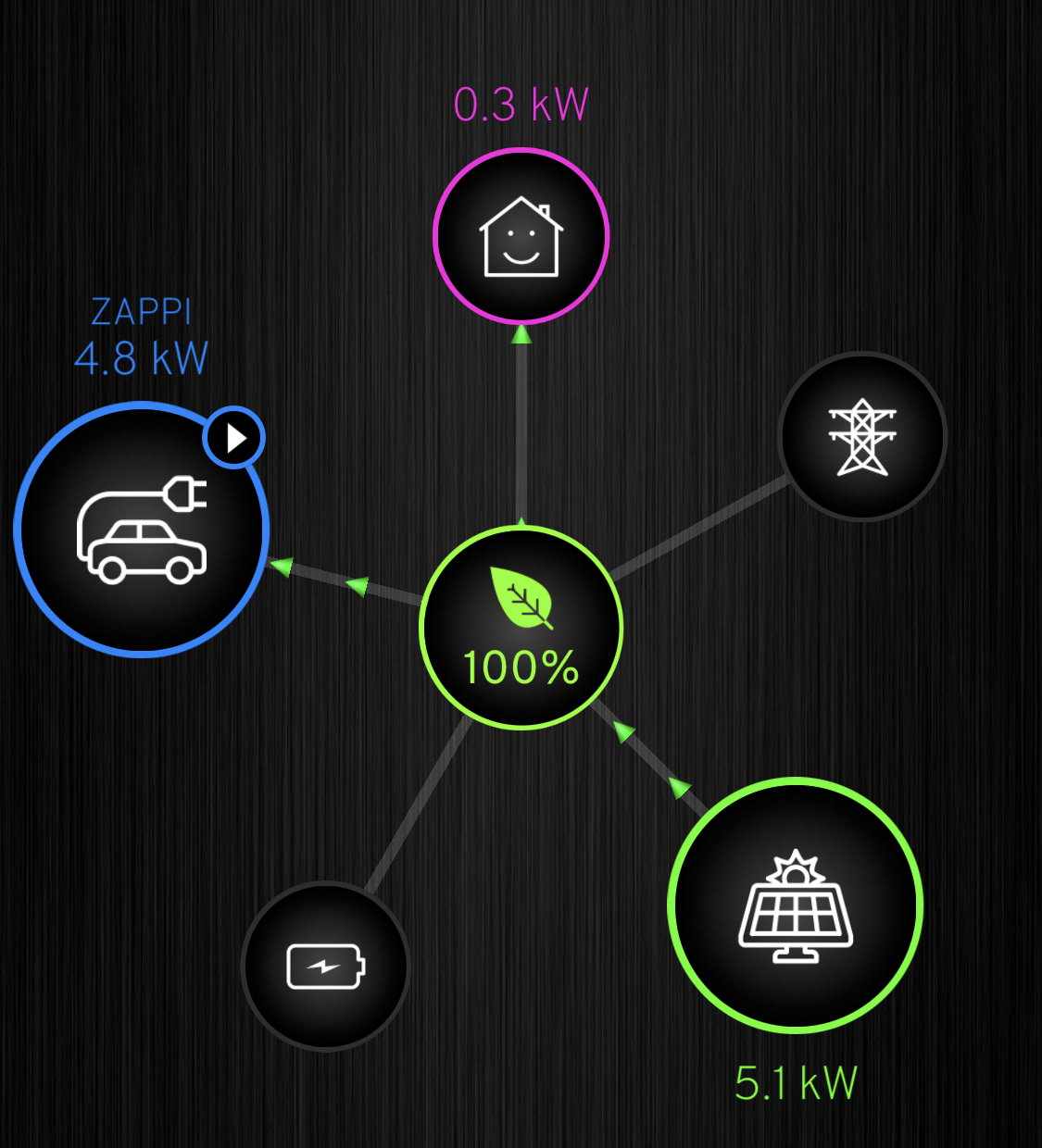
Occasionally, I was seeing over 5kW being generated and most of this was being put into the EV. This is pretty good for this time of year but, I have seen over 5.5kW this month.

Generation today was fairly consistent but well down on the 32.5kWh I saw last week. At the end of the day it reached 24.9kWh.
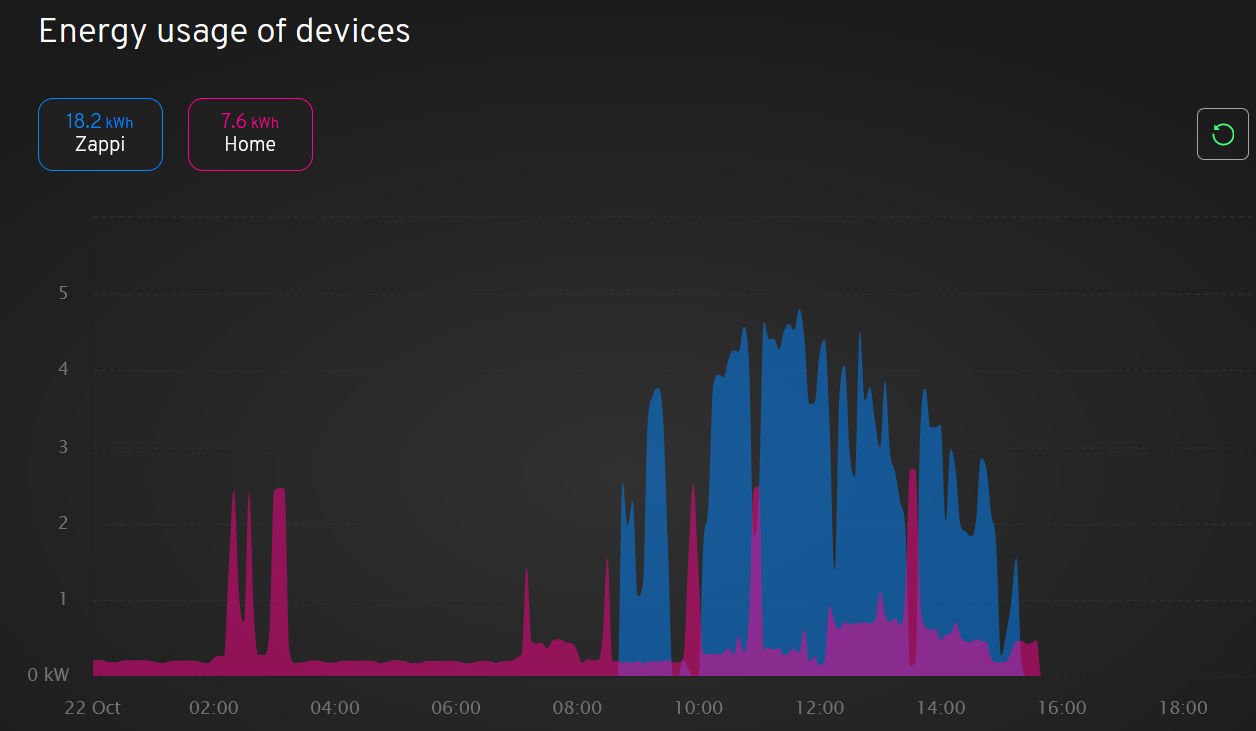
The myenergi website shows that up to 16:00, we used 7.6kWh in our home. The 3 times the washing machine was used are clearly visible. Our dishwasher used quite a lot in the early hours of the morning too. It is time-shifted to use Octopus Go cheap rate electricity.
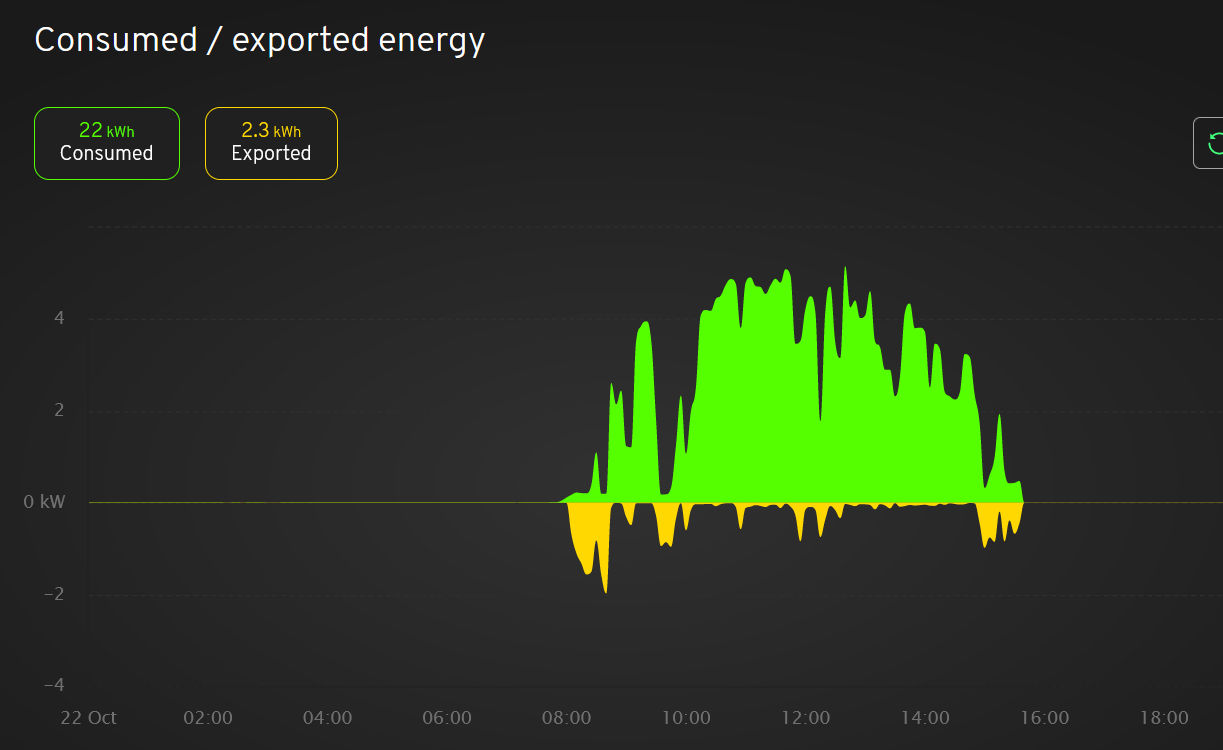
The myenergi website also shows the consumed and exported energy. The small amounts of exported energy whilst charging the EV are down to the in-built delays in the charger and the variable cloud cover. These are to be expected, as are small amounts of imported energy, as it reacts to the changing environment.
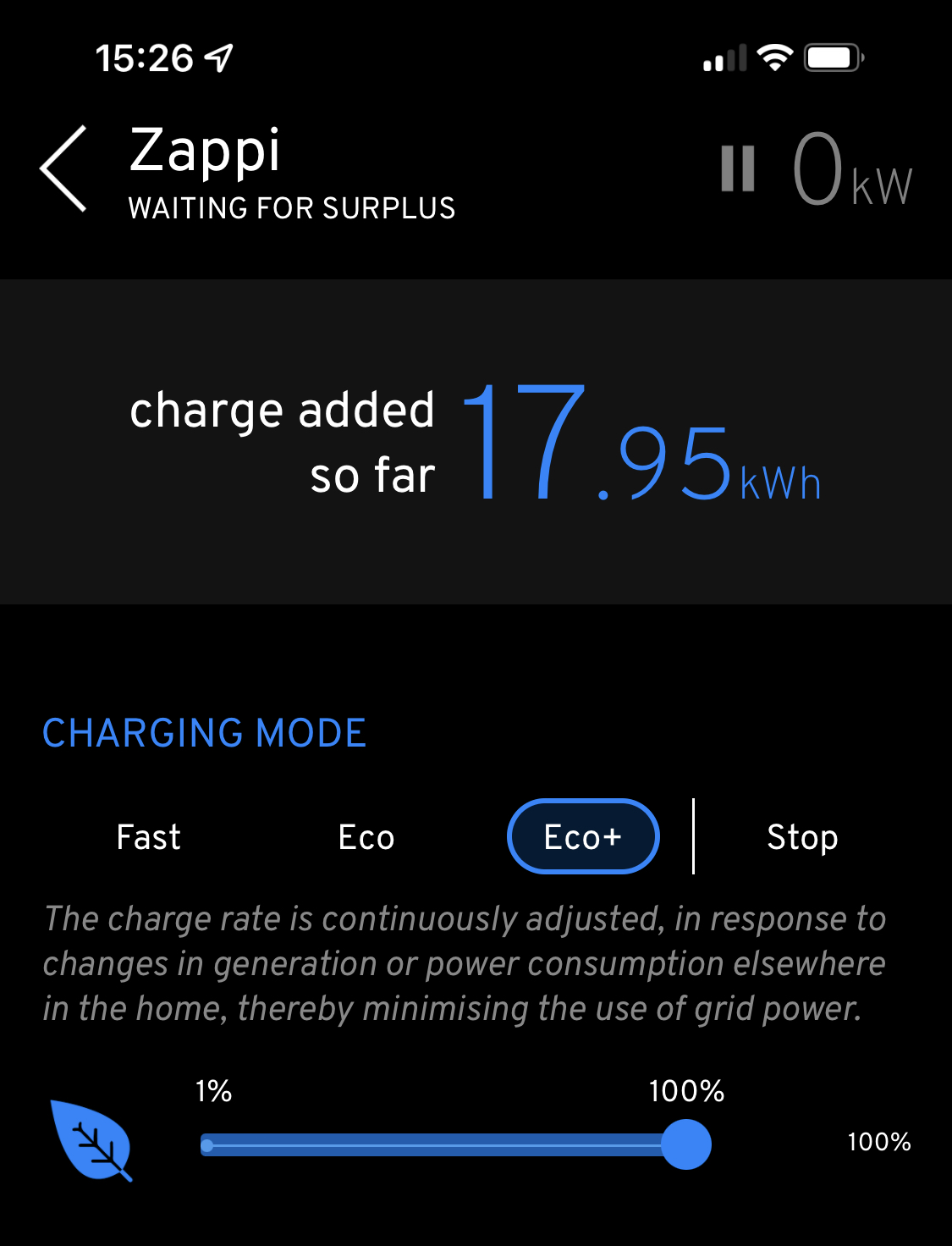
By 15:26, it was clear that no more charging was going to happen, as the output had tailed off. An amazing 17.95kWh had been put in our CUPRA Born :-) This is really good considering the usage today and only 24.9kWh being generated.

At the end of this charging session the CUPRA Born was at a much more healthy 56%, a 28% improvement. If I had plugged it in earlier today, we could have done even better :-)
21st

As part of my smart home solar installation project, the installers put this solar generation meter in. This measures the amount of solar energy generated during the lifetime of the installation and provides the most accurate measurement of this. I took a reading last night (20th), so that I can see how accurate all of the other measurements are in comparison. The meter read exactly 58.00kWh. At the end of the month, I will have a look at all the other generation figures and see how they compare.
At the end of today, I checked the generation meter and it read 71.99, which means we generated 13.99kWh today. The myenergi app says 13.8kWh, so it's pretty close, just 1.4% under reading in one day.
We have used the free local EV charging provided by Tesco since August, as we had no easy way to charge our CUPRA Born. PodPoint have now announced that charging will be introduced from 1st November. The four 7kW chargers within walking distance of our home will be charged at 28p/kWh, so we have no reason to use them again.
20th
Today is going to be cloudy and wet pretty much all day, with thunder and lightning. This is going to be a real test of our smart home solar installation project in winter. The Solcast forecast was just 6.47kWh.
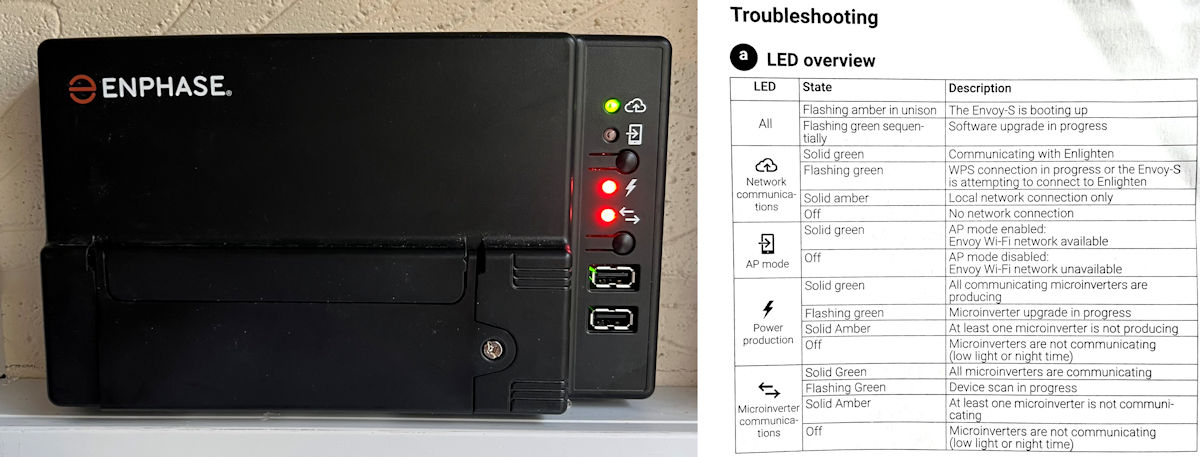
This is the Enphase Envoy hub for my microinverters. I was greeted with 2 orange lights this morning but, this simply means there is not enough sunshine to power up the microinverters so they cannot communicate with the hub :-( At night time, all these lights go out as the microinverters shut down.

Today was not a good day for generation. Just 2.9kWh :-( The Tesla Powerwall would have taken a beating today but I'm confident it would keep the house running all day and up to the point where it could be recharged at the 7.5p/kWh rate. The Solcast forecast for tomorrow is only 10.1kWh, so it would need to be fully charged overnight.
19th
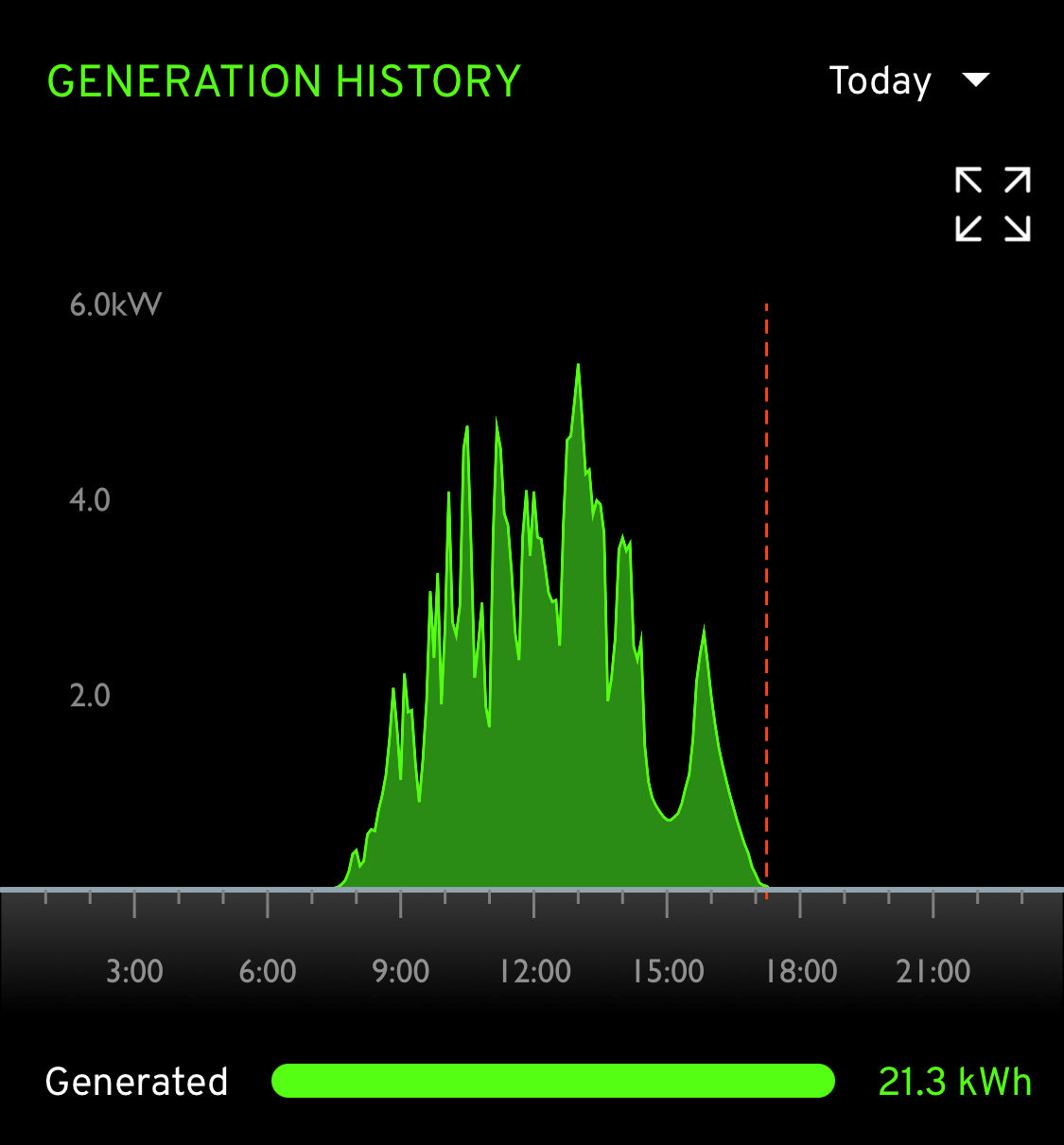
Our second day with solar and there were a lot more clouds about. Even so, we generated over 21.3kWh. This is about twice what we currently use in a typical day. The Solcast forecast was 22.7kWh.
18th
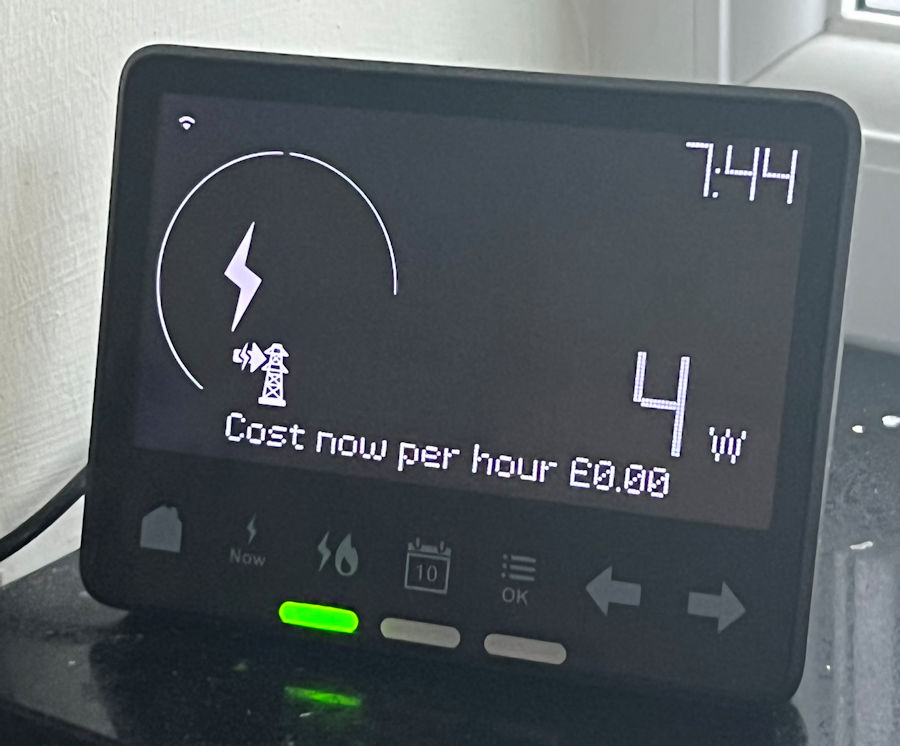
Today is our first full day with solar energy generation :-) Whilst having breakfast at 07:40, I slowly watched our home energy usage drop and our home transition into export. At 07:41 we were exporting energy and the sun was not yet in sight.
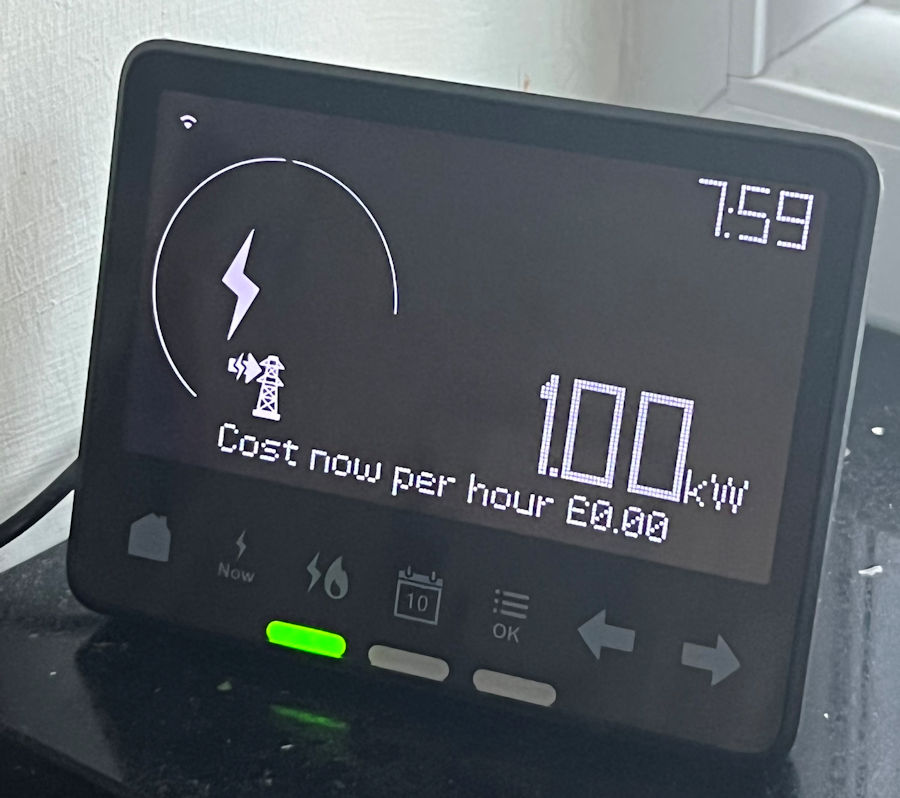
At 07:56 the sun hit the solar panels and we were exporting 0.8kW. At 07:59 we had hit 1kW export.
At this time of the year we are not going to get sunlight in time to pre-heat our hot water in the morning. I can see it working well through the day and into the evening though, which will reduce our gas usage considerably. If it was colder, I could be powering electric space heating at this point too and I will be testing this soon using my smart immersion heater controller

At 8:09 we hit the magic number of 1.4kW export. At this point the Zappi smart EV charger can start to charge our CUPRA Born :-) As the sun rose, our export energy kept rising. 1.8kW at 08:19, 2.2kW at 08:29, 2.6kW at 08:45, 3.2kW at 09:00, 3.9kW at 09:30.
The Solcast forecast was that we are going to generate 43.6kWh today, with 24.7kWh this morning and 18.9kWh this afternoon. I had always assumed these predictions to be high. According to the Myenergi app we generated 16.4kWh in the morning. The was I'm going to revise the information fed into my Solcast forecast calculations at the end of the month, to basically recalibrate them and make them more accurate.

Our first day with solar power was a good one for October. With a clear, cloudless sky all day we generated 32.5kWh. This is about three times what we currently use in a typical day. Peak output was over 5kW, which is pretty good at this time of year and with the sun low down in the sky. The Solcast forecast was 43.5kWh.
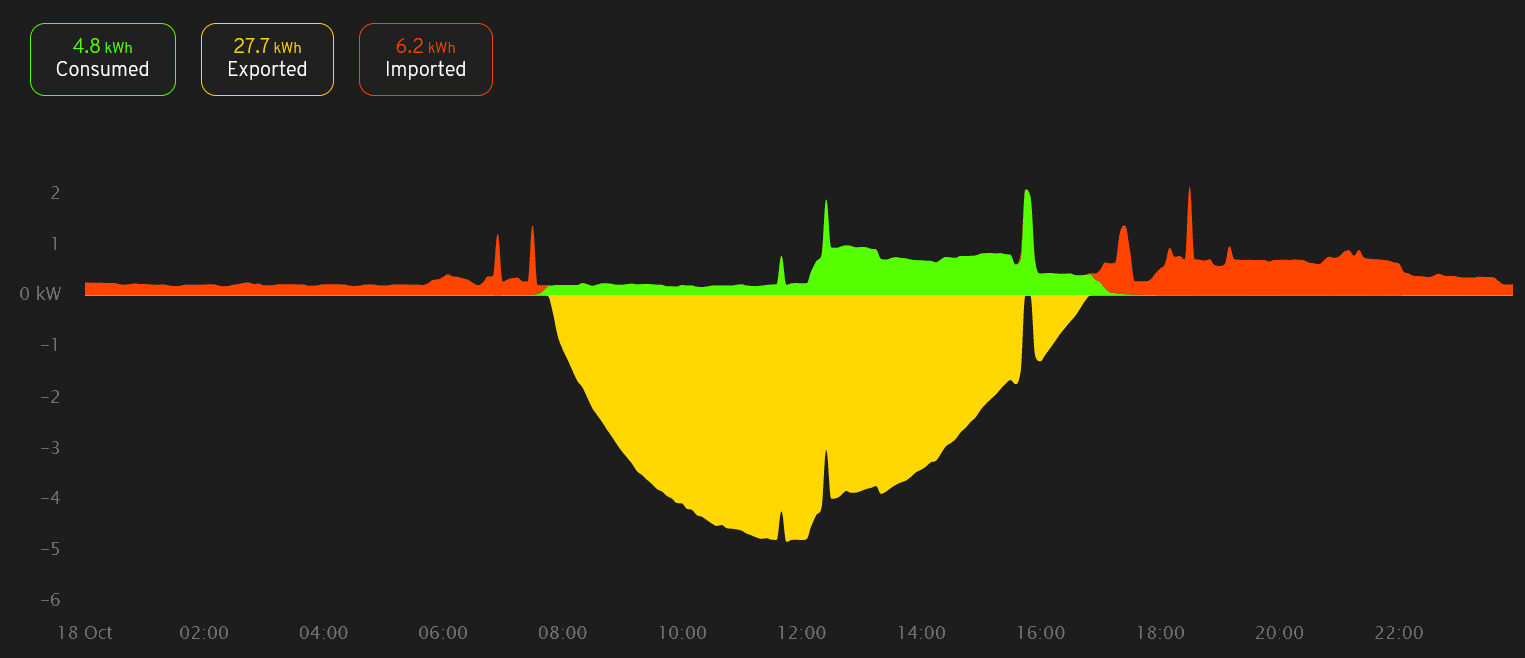
The Myenergi eco-system provides some really useful insight into your energy usage. This graph clearly shows why we need our Tesla Powerwall installed. We exported 27.7kWh and right now we are not getting paid for this. I'm applying for Smart Export Guarantee (SEG) payments very soon.
17th

My smart home solar installation project progressed further today, with the electricians connecting my panels up to the Tesla Backup Gateway. I'm now generating solar power! :-)
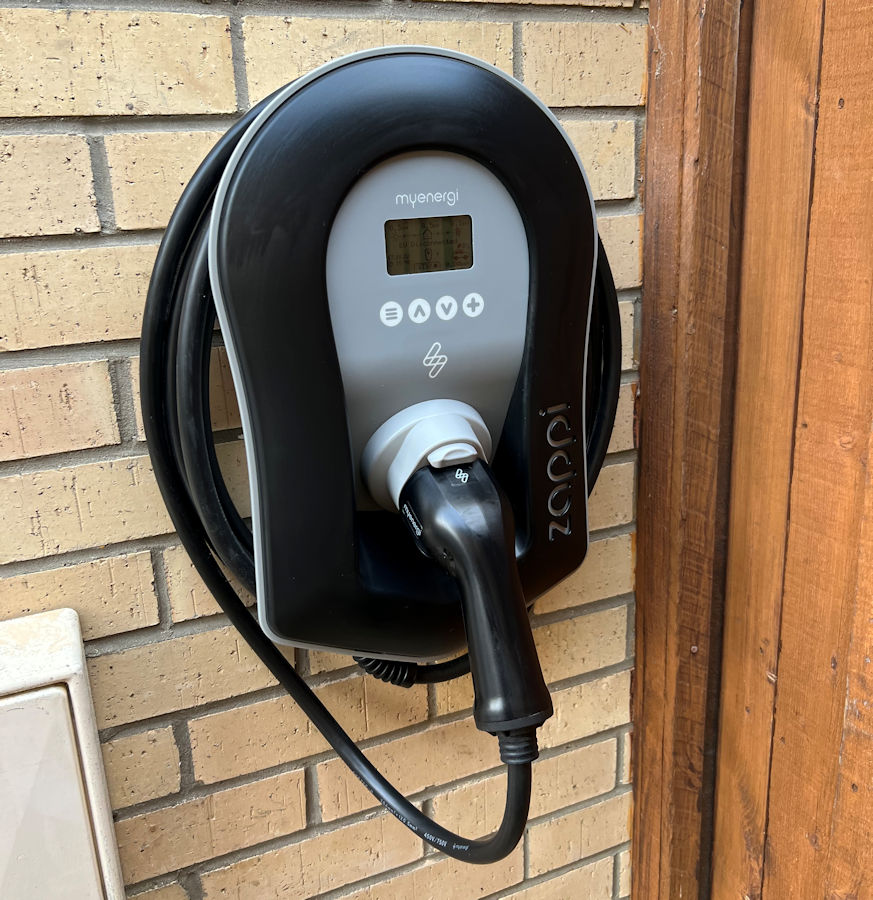
My Zappi smart EV charger was also installed, so I can now charge our CUPRA Born using free, solar energy.
14th

My SQL50A1000V 3-phase rectifiers turned up, so I can progress a bit further with my Vertical Axis Wind Turbine (VAWT) project. I can now test the output of the hoverboard motors I bought earlier this month. These things use 8mm spade terminals, which I didn't know existed until today. I've ordered some 8mm female spade terminals.
11th

Major progress on my smart home solar installation project today! 17 Trina 390W solar panels installed on the roof, generating 6.63kW peak. I'm really pleased with how these look. The quality of the installation is really good.
10th

Really pleased with how my smart home connected garden store has turned out. An Arduino is used to connect up all the doors and other sensors, enables control of the smart lighting inside & out and provides occupancy information back to my contextual smart home. It also has Ethernet cables for an IP camera overlooking the drive.
1st

I picked up a couple of hoverboard motors to test as part of my Vertical Axis Wind Turbine (VAWT) project, just £6 each! I'm curious to see how much power I can get out of these.
September
20th

I've started a background project to research, design & build a Vertical Axis Wind Turbine (HAWT). The plan is to 3D print models to assess their performance, before I scale them up.
August
31st
As part of my on-going smart home solar installation project, I'm writing a monthly energy analysis.
6th
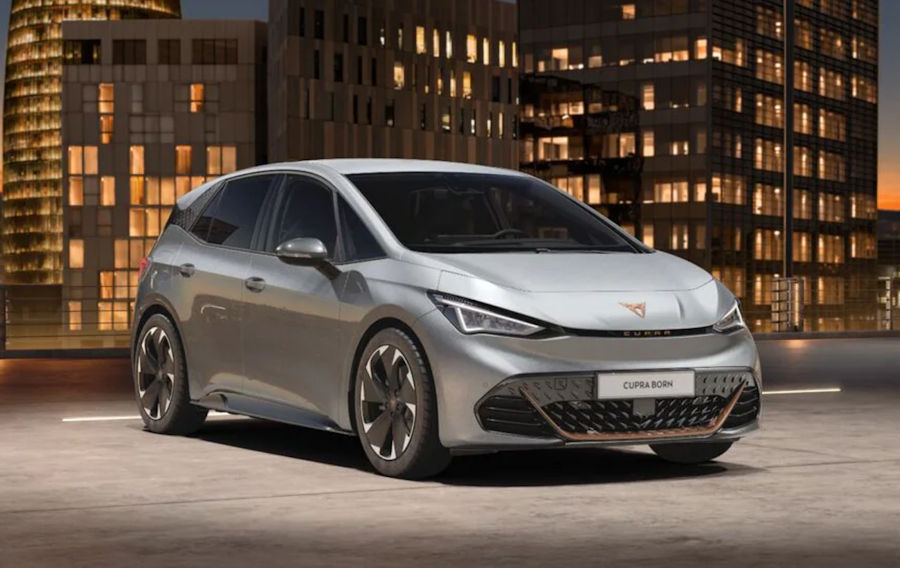
As part of our smart home solar installation project we have bought a CUPRA Born EV. You can read my on-going CUPRA Born V2 review.
June
28th
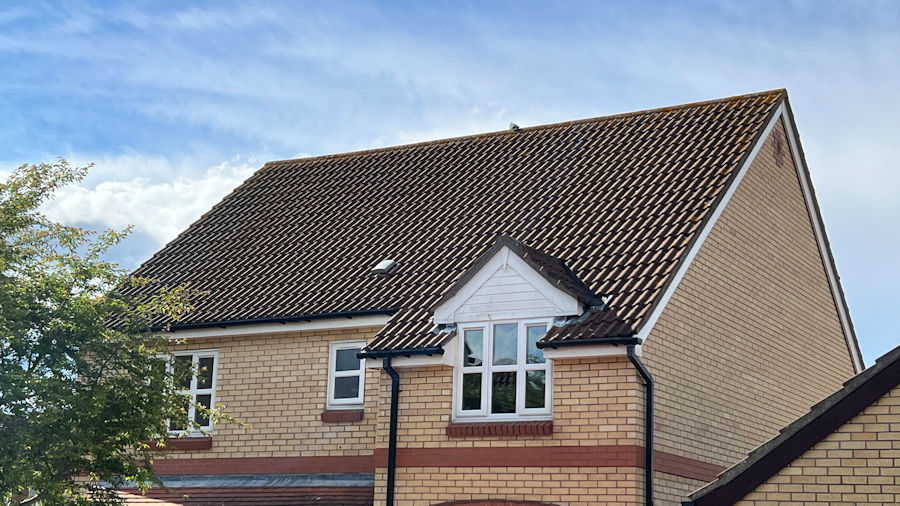
I've signed a contract to kick of my smart home solar installation project and install 6.63kW of solar panels, a Tesla Powerwall and a Zappi smart EV charger. This roof will soon be full of solar panels.



